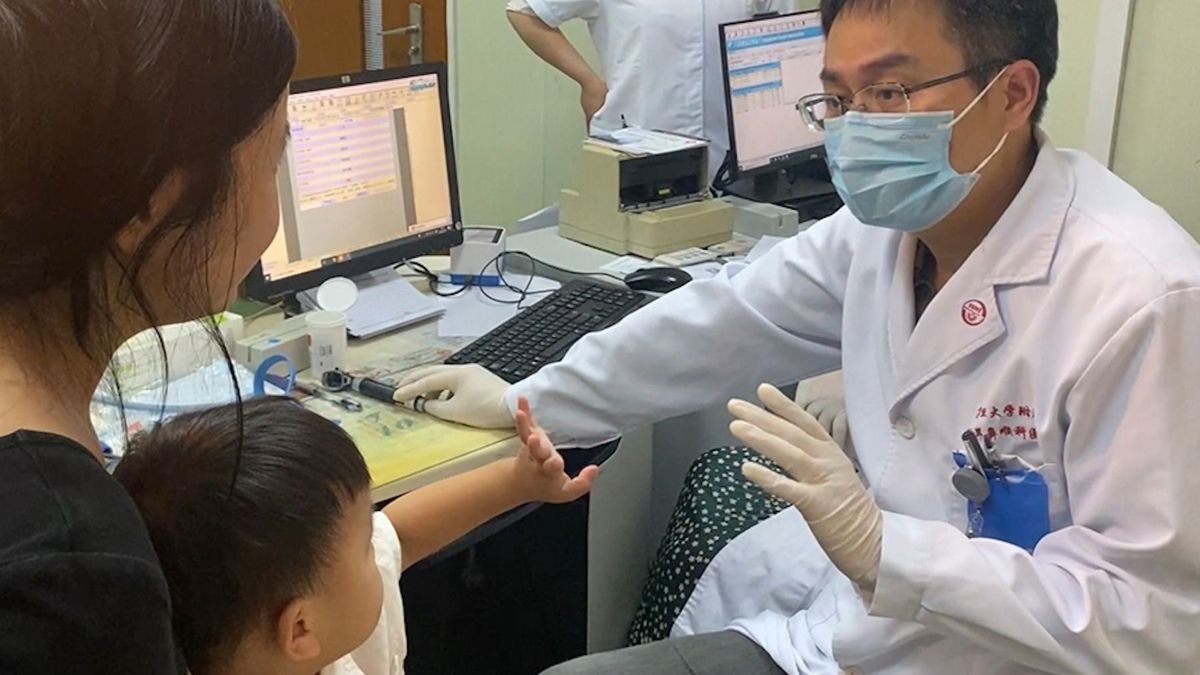
Suffering from profound deafness, 5 children were able to benefit from gene therapy in both ears. Thanks to this revolutionary technique, they can now hear and even dance to the music. Stunning results!
Congenital deafness: gene therapy poised to revolutionize treatment
More than 430 million people worldwide are affected by disabling hearing loss, including congenital deafness which accounts for approximately 26 million of them. It is estimated that 60% of childhood hearing loss is caused by genetic factors. Among them, children with DFNB9 are born with mutations in the OTOF gene that prevent the production of the functional otoferlin protein, necessary for the auditory and neuronal mechanisms underlying hearing.
But faced with this form of deafness, gene therapy continues to progress. More than sixty years after the invention of the cochlear implant – the standard treatment for patients with OTOF-related hearing loss – several studies show that gene therapy could be a future alternative, as we recently speculated. echo with the case of a little English girl who was able to benefit from this treatment in one ear and finally hear her mother's words.
But a pioneering Chinese team has gone even further by restoring hearing in both ears.
Pioneering team uses gene therapy for both ears
In 2022, this research team from Shanghai, China, in partnership with researchers from Mass Eye and Ear, demonstrated the effectiveness of the world's first gene therapy for DFNB9 in a trial conducted in China among six patients treated in one ear. After these results published in The Lancet in January 2024, showed that five out of six children had improved their hearing and speech.
Today, the same team presented the first clinical trial to use bilateral ear gene therapy to treat DFNB9. The new research presents an interim analysis of five children with DFNB9 followed over a period of 13 or 26 weeks. Lead author Prof. Yilai Shu injected functional copies of the human OTOF transgene carried by adeno-associated virus (AAV) into patients' inner ears through specialized, minimally invasive surgery.
Born deaf, children today can dance to music
During follow-up, 36 adverse events were observed, but no dose-limiting toxicities or serious events occurred. All five children showed hearing recovery in both ears, with dramatic improvements in speech perception and sound localization. Two of the children gained the ability to appreciate music, a more complex auditory signal, and were observed dancing to music in incredible videos made for the study. The trial continues and participants continue to be monitored.
The researchers confessed that their goal has always been to treat children in both ears to achieve the ability to hear sounds in three dimensions, an important ability for communication and common daily tasks such as driving. “Restoring hearing in both ears of children born deaf can maximize the benefits of hearing recovery“, said Prof. Yilai Shu. “These new results show that this approach is very promising and warrants larger international trials“.
The bilateral study requires more precautions than the unilateral study (one ear), because operations in both ears double the duration of the procedure. Additionally, by injecting double doses into the body, the immune response will likely be stronger and the risk of adverse effects may be greater.
“Our study strongly supports treating children with DFNB9 in both ears, and we hope that this trial can be expanded and this approach can also be considered for deafness caused by other genes or non-genetic causes“added Professor Chen, professor of otolaryngology and head and neck surgery at Harvard Medical School. “Our ultimate goal is to help people regain their hearing, regardless of the cause of their hearing loss“.
